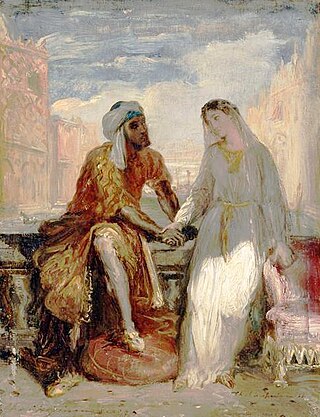Top Qs
Timeline
Obrolan
Perspektif
Pernikahan antarras
pernikahan di antara dua individu yang berbeda latar belakang ras Dari Wikipedia, ensiklopedia bebas
Remove ads
Pernikahan antarras terjadi ketika dua orang dari kelompok ras yang berbeda menikah. Hal ini merupakan bentuk dari eksogami (menikahi di luar dari kelompok sosial), dan dapat dipandang dalam konteks pembatasan yang miskegenasi (mencampur grup rasial yang berbeda dalam pernikahan, kohabitasi atau hubungan seksual).

Remove ads
Afrika dan Timur Tengah
Kepulauan Samudra Hindia
Pada akhir abad ke-19 dan awal abad ke-20, pria Tionghoa di Mauritius menikahi wanita India.[1][2] Sensus 1921 di Mauritius menyatakan bahwa wanita India di sana memiliki 148 anak dari pria Tionghoa.[3][4][5]
Asia
Ringkasan
Perspektif
Asia Timur
Jepang
Pernikahan antar-etnis di Jepang telah berlangsung sejak abad ke-7, ketika imigran China dan Korea mulai melakukan menikah dengan penduduk lokal. Pada awal abad ke-9, sepertiga dari seluruh keluarga bangsawan di Jepang memiliki garis keturunan orang asing.[6] Pada 1590-an, lebih dari 50.000 orang Korea secara paksa didatangkan ke Jepang, di mana mereka menikah dengan penduduk lokal. Pada abad ke-16 dan ke-17, sekitar 58.000 orang Jepang pergi ke luar negeri, beberapa di antaranya menikah dengan wanita lokal di Asia Tenggara.[7]
Para pedagang Portugis di Jepang juga menikah dengan wanita Kristen lokal pada abad ke-16 dan ke-17.[8]
Pada saat penganiayaan anti-Kristen pada 1596, beberapa Kristen Jepang kabur ke Makau dan koloni-koloni Portugis lainnya seperti Goa, di mana terdapat komunitas budak dan pedagang Jepang pada awal abad ke-17.[6] Budak-budak Jepang dibawa atau diserahkan oleh para pedagang Portugis dari Jepang.[9] Pernikahan antar-ras dengan penduduk lokal di koloni-koloni Portugis juga terjadi.[6] Hubungan pernikahan dan seksual antara pedagang Eropa dan wanita Jepang juga terjadi pada waktu itu.[10]
Remove ads
Eropa
Ringkasan
Perspektif
Kekaisaran Ottoman
Pada abad ke-11, wilayah Bizantium Anatolia ditaklukan oleh Turki Seljuk, yang datang dari Turkestan di Asia Tengah. Keturunan Turki Ottoman mereka menganeksasi Balkan dan bagian selatan dari Eropa Tengah pada abad ke-15 dan ke-16. Karena hukum pernikahan Islam memperbolehkan laki-laki Muslim untuk menikahi perempuan Kristen dan Yahudi, pernikahan antar-ras menjadi hal yang umum di Kekaisaran Ottoman bagi laki-laki Turki untuk menikah dengan perempuan Eropa. Contohnya, berbagai sultan Dinasti Ottoman sering memiliki istri Yunani (Rûm), Slavik (Saqaliba), Venesia, Kaukasus Utara dan Prancis. Beberapa istri Eropa tersebut memiliki pengaruh yang besar di kekaisaran tersebut sebagai Valide Sultan ("Orang tua Sultan"); beberapa contoh yang paling terkenal meliputi Roxelana, seorang budak harem Slavik yang kemudian menjadi istri kesayangan Suleiman I, dan Aimée du Buc de Rivéry, istri dari Abdul Hamid I dan saudari dari Permaisuri Prancis Josephine. Karena pernikahan antar-ras yang umum terjadi di Kekaisaran Ottoman, mereka memiliki dampak yang signifikan pada penampilan orang Turki pada masa sekarang di Turki, yang berbeda dengan orang Turkic di Asia Tengah.[11]
Lihat pula
- Pernikahan antar negara
- Pernikahan antar kepercayaan
- Pernikahan antar-ras dalam film
Referensi
Pranala luar
Wikiwand - on
Seamless Wikipedia browsing. On steroids.
Remove ads
